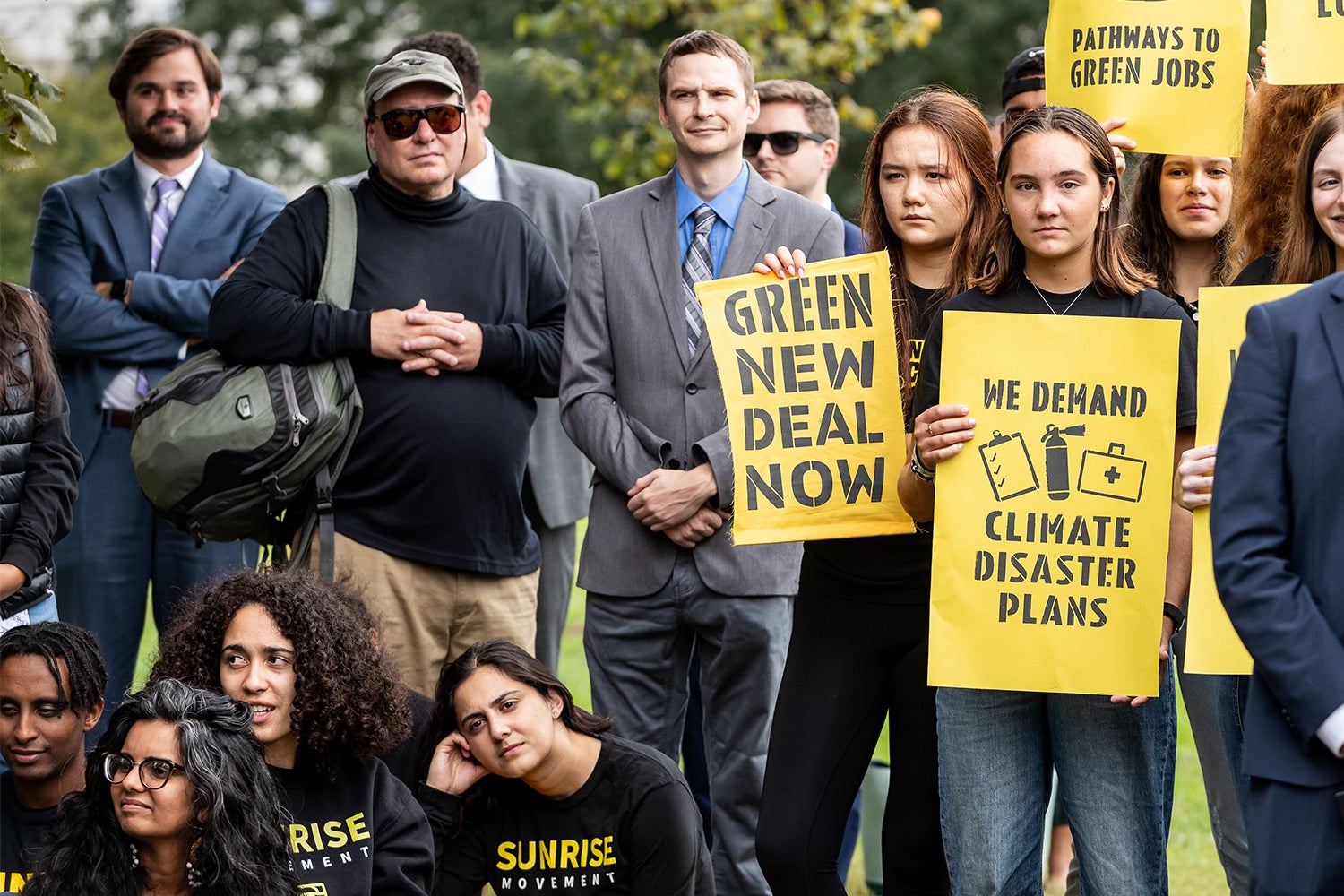Hey team, and welcome back to one5c! We have an Earth Day tradition around here. In observance of this holiday, we call on you all to pull one of the absolute strongest levers any of us has in addressing the climate crisis: telling your elected officials to prioritize saving the world.
Talk to anyone who specializes in advocacy and civic action and they’ll tell you that when reaching out to reps, specificity is key. So we decided to single out a piece of legislation that’s been winding its way through Congress (or languishing on a committee shelf), and tee up all the details you need to ping your peeps—including a cut-and-paste form letter and a super-easy way to get your message into their inboxes. —Corinne
TELL YOUR REPS TO CLEAN UP OUR PUBLIC SCHOOLS
By Shreya Agrawal

This Earth Day, ask your reps and senators to get behind a greener, cleaner, and safer school system for America’s students.
There is a lot that schools need to do to prepare for a climate-changed world—and get students ready, too. The buses that run through neighborhoods to pick up kids spew fumes and pollutants as they go, and the air inside classrooms is often no better. While the Inflation Reduction Act provides credits for K-12 schools to increase investment in clean energy infrastructure and vehicles, it lacks other adaptation measures that would make schools and communities more resilient. A piece of legislation called the Green New Deal for Public Schools Act aims to address that—and more—but has repeatedly stalled in Congress.
What is Green New Deal for Public Schools Act?
Climate change is already making the world tougher to live in for everyone, but today’s kids and teens will bear the brunt of what’s to come. Dangerous weather patterns will only get more extreme in the future, and many schools are structurally unsafe. Hurricane Katrina, for example, destroyed 110 out of 126 public schools in New Orleans in 2005, and Hurricane Maria in Puerto Rico caused the permanent closure of more than 22% of the territory’s public schools in 2017. According to a 2020 report by the federal Government Accountability Office, about half of the public school districts across the country report a need to upgrade or replace their infrastructure, including ventilation systems and structures, and address other health hazards.
In 2021, Rep. Jamaal Bowman (D-N.Y.) first introduced the Green New Deal for Public Schools Act. The idea was to redesign public school infrastructure to reduce emissions, remove toxic materials such as asbestos and mold, and make schools more resilient against extreme weather. The bill has been reintroduced in the House every year since, and last fall in the Senate as well, gaining more co-sponsors and support.
The Inflation Reduction Act, which became law in 2022, has gotten some of that original work done. It set up systems to help K-12 schools increase investment in energy upgrades like solar panels and vehicles through extensive federal tax credits. This is huge because schools can be major centers of emissions and pollution, including through the hundreds of thousands of school buses that run on fossil fuels, spewing carbon and other pollutants through neighborhoods.
Still, there are gaps. The current version of Green New Deal for Schools is a 10-year, $1.6 trillion plan that includes a number of environmental measures, depending on what schools need. These include $486 billion to make buildings structurally stronger, incorporate clean energy sources, and remove mold, asbestos, and other harmful materials. It would also provide funds to create an Office of Sustainable Schools within the Department of Education, incorporate an environmental justice curriculum, and address historic funding inequities for districts with students living in poverty.
On a broader scale, the act will help schools reach net-zero emissions through continued investments in energy updates like solar panels and LED lighting. Taken together, these efforts will provide kids with clean air and a healthy environment at their schools, where they spend more than 1,000 hours every year. Decarbonizing public schools would cut 78 million tons of carbon emissions every year, which is like taking 17 million cars off the road.
What am I asking my reps to do?
You can write a letter to your state’s senators and the member of the House of Representatives for your district and ask them to co-sponsor the bill. Co-sponsorship is a Congress member’s formal sign of support for a given measure. Enough co-sponsors (218 in the House and 51 in the Senate) can act as a signal to leadership that the legislation will pass if it’s brought to a vote.
Click below to get the text of the letter and a super-easy way to send it to your reps.
